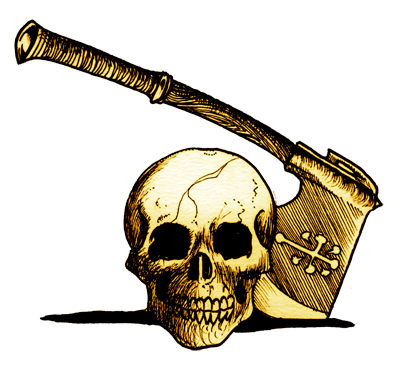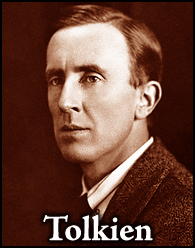The Cimmerian V3n4 — April 2006

Edited by Leo Grin | Illustrated by Dalmatius
40 pages
This issue was printed in two editions. The deluxe edition, numbered 1–75, uses a black linen cover with foil-stamped gold text. The limited edition, numbered 76–225, uses a gold cover with solid black text.
DELUXE COPIES DESTROYED: 9
LIMITED COPIES DESTROYED: 70
Features the longest and most researched look at Howard’s Desert Adventures ever written, an article studying the editing history of one of Howard’s humorous westerns, a look at an intriguing historical precedent for Conan, the return of Richard Tierney’s new Hyborian poetry cycle, a detailed Lovecraft-themed letter in The Lion’s Den, and more.
EXCERPTS:
Howard was careful and consistent in describing his characters. Both Bran Mak Morn and Gordon are compact men, not physically large but incredibly strong. Their hair and complexions are dark, and their eyes are an icy, intense black. Of course, there was a practical side to this: a dark-complected, dark-eyed man can disguise himself as a native of Afghanistan more easily than a fair, blue-eyed fellow. But Howard wasn’t just a technician of fiction, he was a writer who brought his daydreams to life. Moreover he used physical appearance to denote racial origin, not just in a broad sense, but with a very exact, almost tribal specificity. In “Hawk of the Hills” Gordon describes himself as being “Highland Scotch and black Irish by descent.” Those are the very groups identified as modern descendants of the Picts in Howard’s day. Gordon is not just a Texan in the East, he is a Celt or even a descendant of the Picts, traversing landscapes where Bronze-Age Aryan chariots rolled in a quest for new lands.
— from “Indomitable Wildness, Unquenchable Vitality” by David A. Hardy
In “The Phoenix on the Sword,” “The Scarlet Citadel,” and The Hour of the Dragon, we get some sense that Conan seems to have become quite a competent, even mild king. He has a curious respect for freedom of the “press” and is reluctant to kill the subversive poet Rinaldo until forced to. He lowers taxes, suppresses bandits such as he was as a young man, and rules wisely. He refrains from senseless and costly aggression. He is even gentle with the royal harem, and angered to see them — viewed through a magic glass — abused by his would-be successor. In “Phoenix,” we first see him seated in his palace, poring over paperwork, expressing the wish that he could ride out with his men on some adventure, but advised against it by supporters — it is significant that he has powerful supporters among the Aquilonian military and civil bureaucracy — who fear a plot to lead him into some isolated spot, then overwhelm him. And as “The Scarlet Citadel” opens, it would appear that Conan didn’t listen, and one of these plots succeeded.
— from “Two Barbarian Usurpers” by Darrell Schweitzer
His mighty feats enabled him to wrest
The crown of that supreme Hyborian power
Reigning in splendor in the dreaming west–
A grim portent of that doomed land’s last hour.
— from “The Doom of Hyboria” by Richard L. Tierney
This does actually suggest that REH may have been attempting to do something similar to what HPL was doing when he created his own artificial mythology. This may even be alluded to by REH himself when he reveals in his Lovecraftian fragment “The Black Eons” that von Junzt wrote about the Hyborian Age in his Nameless Cults. I am not actually suggesting that the Conan stories are “Lovecraft pastiches” as Stephen King stated, but I am suggesting that REH’s creation of the Hyborian Age may have been influenced, whether consciously or not, by finding out that HPL had created his own mythology, and that when REH found out that HPL’s mythology did not suit the style of his own stories, he decided to create one of his own that would.
— Graeme Phillips writing in The Lion’s Den




